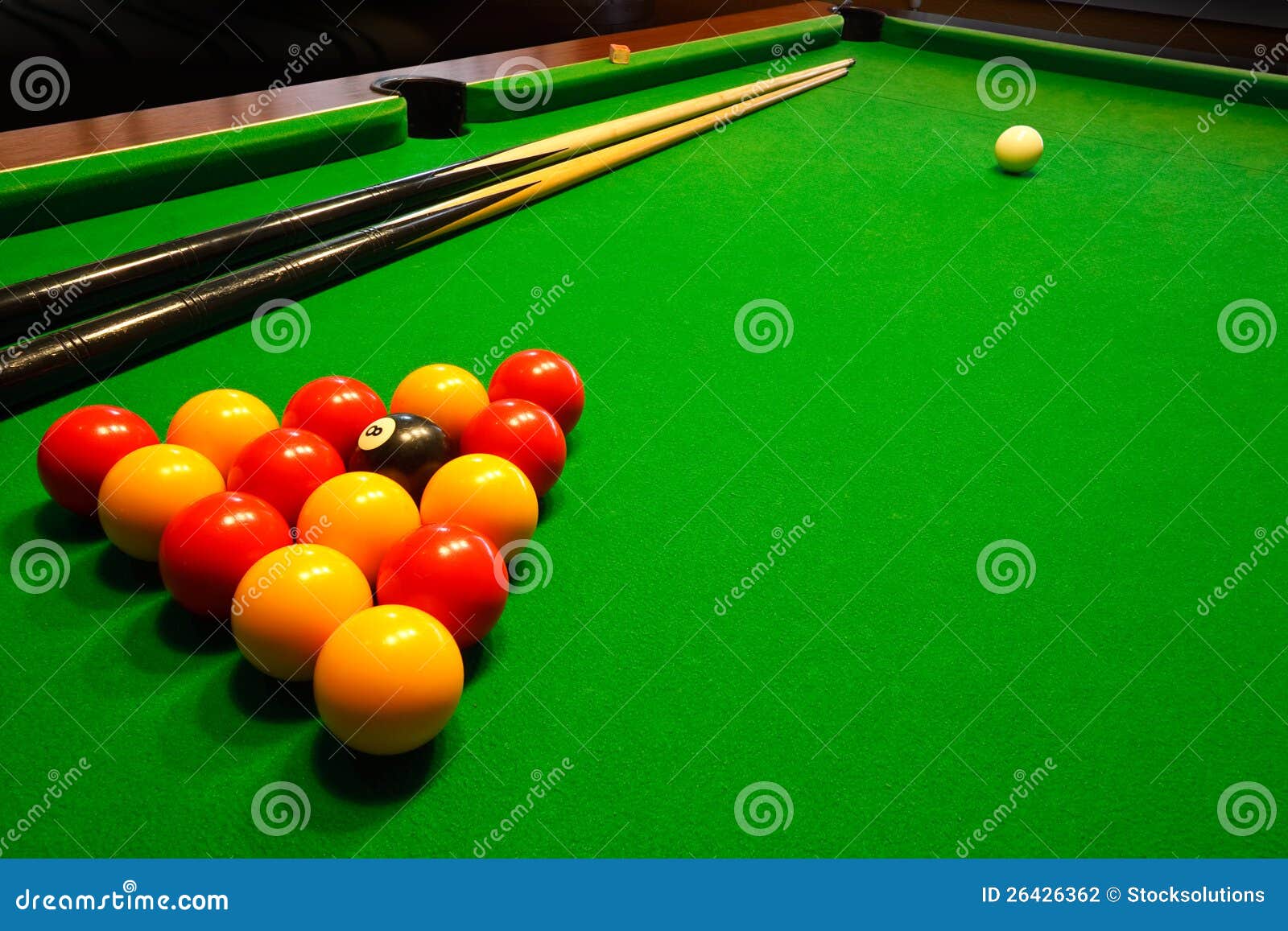

Wood was the table bed of a billiard table until around 1835, when slate became popular due to its durability for play and the fact that it won't warp over time like wood. Billiard players discovered that the balls could bounce off the rails and began deliberately aiming at them, and therefore the "bank shot" was born! This is where the billiard ball is hit toward the rail with the intention for it to rebound from one cushion as part of the shot-possibly even three, four or five rails and into the pocket. They used to be called "banks" because they slightly resembled the banks of a river. Around the turn of the 18th century in Europe, the leather cue tip was developed, which allowed a player to apply side-spin, topspin, or even backspin to the ball.Īll billiard/pool cues used to be one single shaft until the two-piece cue arrived in 1829.īilliard/pool tables originally had flat walls for rails and their only function was to keep the balls from falling off. The handle was called a "queue" meaning "tail" from which we get the word "cue." For a long time only men were allowed to use the cue women were forced to use the mace because it was felt they were more likely to rip the cloth with the shaper cue (it must have been all the trick shots they were trying to do).Īt some point, someone used chalk to increase friction between the billiard ball and the cue stick (even before cues had tips) and found significant improvement in their performance. In such a case, the players would turn the mace around and use its handle to strike the ball. When the ball lay near a rail, the mace was very inconvenient to use because of its large head. The cue stick was developed in the late 1600s. In the original game (when they first brought it indoors), the balls were shoved (rather than struck) with wooden sticks called maces.

In 1600, the game of billiards was familiar enough to the public that Shakespeare mentioned it in his play "Antony and Cleopatra." Seventy-five years later, the first book of billiards rules remarked of England that there were "few Tones of note therein which hath not a publick Billiard-Table." It has been known as the "Noble Game of Billiards" since the early 1800's but there is evidence that people from all walks of life played the game since its inception. Most of our information about early billiards comes from accounts of playing by royalty and other nobles. The term "billiard" is derived from the French language, either from the word "billart," one of the wooden sticks, or "bille," a ball. The game moved indoors to a wooden table with green cloth to simulate grass (I'm not really sure why they decided to simulate grass) and a simple border around the edges. It has evolved from that point into the present-day style of billiard/pool table and rules. The first player that can pocket 8 balls in the corner hole of his opponent wins.What Is Billiards and How Did It All Start?īilliards began as a lawn game similar to the croquet played sometime during the 15th century in Northern Europe. One-Pocket: A strategic game where each player is assigned one of the corner pockets of the table. All the balls should be pocketed, the player with the last shot wins. Three-ball: A rotation game that uses only three balls. The players must make contact with the lowest numbered ball on the table, and the game is won by pocketing the 9th ball. Nine-ball: A rotation game that uses only the first 9 balls. You can also play the classic Flash title, Blast Billiards in your web browser, without installing Flash. Popular games include 8 Ball Billiards and Pool Club.

Most pool games are based on this variation. The goal is to claim a suit and pocket all of the followed by the black 8 ball. 8-ball Pool: Most commonly played pool game in the United States.


 0 kommentar(er)
0 kommentar(er)
